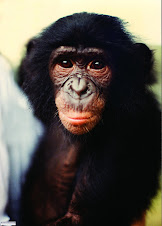 My favorite South American mammal is the giant otter seen on this postcard. Rare in captivity, only the Dallas World Aquarium, the Miami Metro Zoo, the Philadelphia Zoo, and the Jacksonville Zoo and Gardens keeps the species in the United States.
My favorite South American mammal is the giant otter seen on this postcard. Rare in captivity, only the Dallas World Aquarium, the Miami Metro Zoo, the Philadelphia Zoo, and the Jacksonville Zoo and Gardens keeps the species in the United States.From the 50's through the mid-80's, the giant otter was hunted for its hide, and populations had sunk to an estimated few thousand. Today, this otter has rebounded, with most fish healthy water habitats having good numbers of giant otters. The biggest threat to otters today is mercury pollution from mining that enters into the food chain. Mercury laden fish are toxic to otters and humans alike.
The giant otter is extremely social, and occurs in the wild in groups from six to a dozen individuals. Offspring stay with the parents and help rear their siblings, for up to five years. Otter families are extremely territorial, with sharply defined ranges. They are primarily fish eaters, but will consume other things they find, such as anacondas, aquatic birds, and black caimans. Caimans as well as jaguars occasionally take giant otters.
The following website give fascinating information on giant otters, as well as incredible photographs. It discusses the pros and cons of various models of giant otter ecotourism in Peru and Brazil. Six sites where wild otters are readily observed are listed, including the Karanambo Ranch in Guyana:
http://www.giantotter.org/Pterohome.html













No comments:
Post a Comment